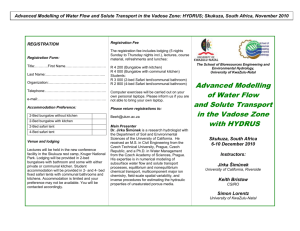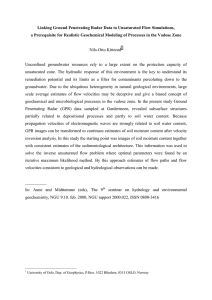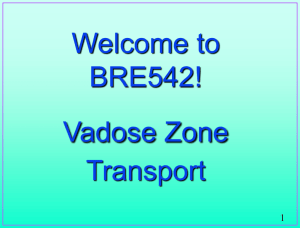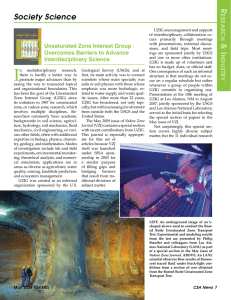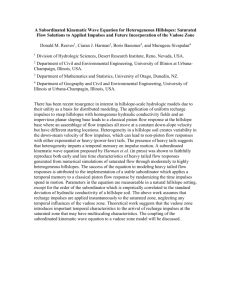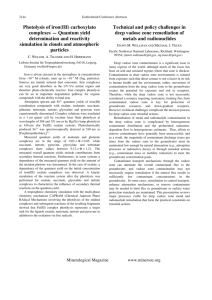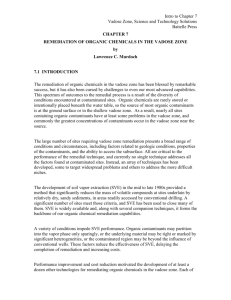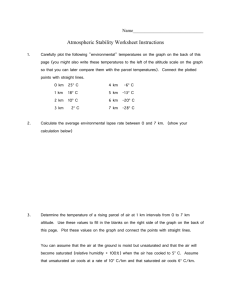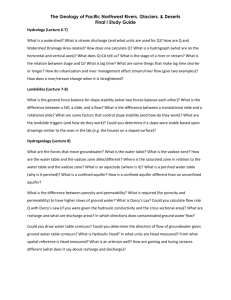Course Outline - BRE 542, Vadose Zone Transport, Fall 2003
advertisement
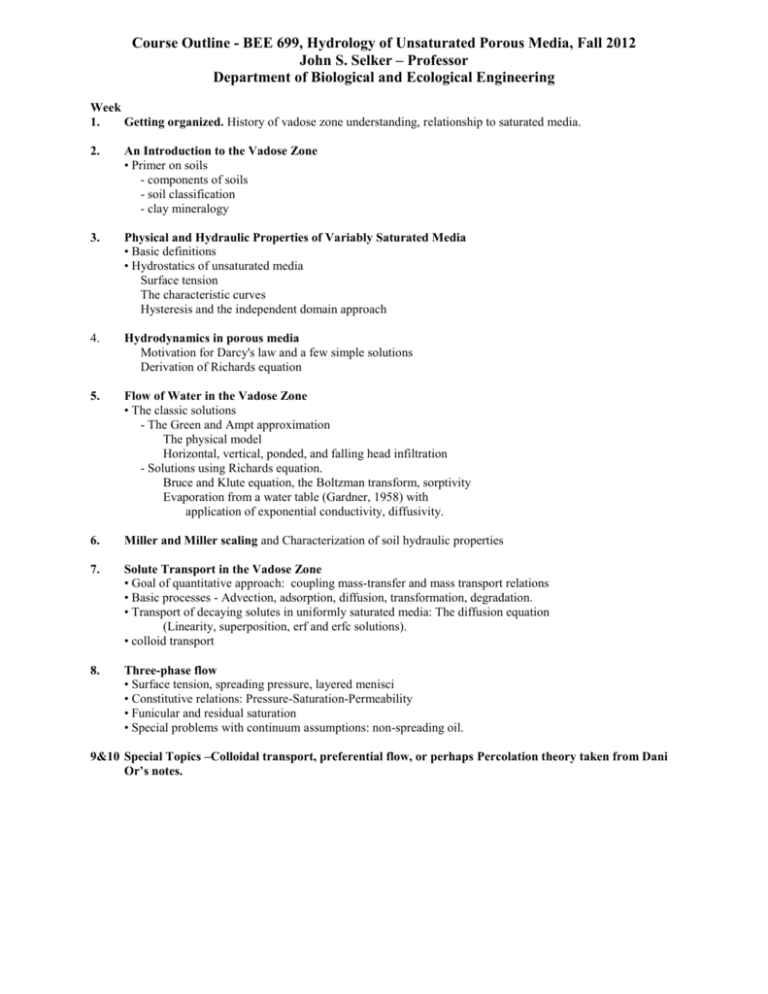
Course Outline - BEE 699, Hydrology of Unsaturated Porous Media, Fall 2012 John S. Selker – Professor Department of Biological and Ecological Engineering Week 1. Getting organized. History of vadose zone understanding, relationship to saturated media. 2. An Introduction to the Vadose Zone • Primer on soils - components of soils - soil classification - clay mineralogy 3. Physical and Hydraulic Properties of Variably Saturated Media • Basic definitions • Hydrostatics of unsaturated media Surface tension The characteristic curves Hysteresis and the independent domain approach 4. Hydrodynamics in porous media Motivation for Darcy's law and a few simple solutions Derivation of Richards equation 5. Flow of Water in the Vadose Zone • The classic solutions - The Green and Ampt approximation The physical model Horizontal, vertical, ponded, and falling head infiltration - Solutions using Richards equation. Bruce and Klute equation, the Boltzman transform, sorptivity Evaporation from a water table (Gardner, 1958) with application of exponential conductivity, diffusivity. 6. Miller and Miller scaling and Characterization of soil hydraulic properties 7. Solute Transport in the Vadose Zone • Goal of quantitative approach: coupling mass-transfer and mass transport relations • Basic processes - Advection, adsorption, diffusion, transformation, degradation. • Transport of decaying solutes in uniformly saturated media: The diffusion equation (Linearity, superposition, erf and erfc solutions). • colloid transport 8. Three-phase flow • Surface tension, spreading pressure, layered menisci • Constitutive relations: Pressure-Saturation-Permeability • Funicular and residual saturation • Special problems with continuum assumptions: non-spreading oil. 9&10 Special Topics –Colloidal transport, preferential flow, or perhaps Percolation theory taken from Dani Or’s notes.
